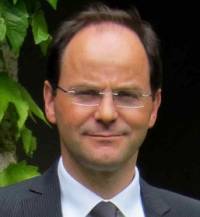Roberto Cipolla

Roberto Cipolla is often regarded as a great Italian computer vision researcher who has based his work in the UK, but in fact he grew up in Solihull, so is truly home-grown. He studied undergraduate engineering at Cambridge engineering, and then went to the University of Pennsylvania where his Master’s thesis (1985) was on radar signal processing. A love of the films of Akira Kurosawa, and the dream of what was then called “5th Generation” robotics brought him to Japan, to the famous Electrotechnical Laboratory. There he met some of the greats of computer vision: Ikeuchi, Kanade, Asada. They were doing pioneering work in 3D vision, and Roberto immediately saw the potential to apply that work to the difficult problem of analysing human motion, the subject of a further MEng. For his PhD, the ETL’s greats had heard that Brady, and then Blake, were soon to arrive in Oxford, and it was there that Roberto completed his PhD on 3D reconstruction from smooth 2D contours, an immensely difficult problem to which Cipolla has contributed much of the seminal work, including the excellent monograph with Peter Giblin, “Visual Motion of Curves and Surfaces”, to which I still refer frequently.
Starting as a lecturer at the Cambridge Engineering department in 1992, Roberto immediately became remarkable for the quality of the work he was doing. A stream of top-notch papers came from this new research group, making the result of the world sit up and take notice. The range of topics was impressive: Multiple-view geometry; Model-based tracking; Reconstruction and recogntion of architecture; Object recognition; and of course analysis of images of humans. From face recognition to hand tracking to 3D body modelling, Cipolla’s group’s work was certainly a key source of inspiration for my colleagues when we began work on human body tracking for Kinect for Xbox 360. All the work from Roberto’s lab combines the best characteristics of great research: taking hard problems, and creating compelling solutions which display mathematical elegance, great depth of understanding, and strong practical engineering. He always has some amazing new demo to show on his laptop (or indeed nowadays on his phone), and is full of excitement both at the theoretical advances that it embodies and the real-world benefits it can bring.
Of the thirty or so PhD students he has graduated since he began at Cambridge, I count it that fourteen are now academics at major institutions across the world, and many of the remainder are among of the most highly regarded industrial academics in computer vision. This mentoring of PhDs continues with his highly regarded series of computer vision summer schools, held in Sicily every year. A place at the school is highly prized, not least because of the stellar field of international experts Roberto assembles every year. Indeed I would suggest that not only are places prized by the students, but also by the lecturers.
In parallel, his continuing interest in Japan (including a year-long visit to Toshiba just after his PhD) led to the founding in 2006 of the computer vision group at Toshiba’s Cambridge Research Lab, and in 2007 Roberto was appointed Lab director. Real-world applications also underpin the spinout companies that have emerged form his lab. To name just two: Metail is already revolutionizing online clothes shopping, and Zappar is a winning take on the much-talked-about technology of virtual reality.
He has received many recognitions for his work: he became a Reader in Information Engineering in 1997 and a Professor in 2000, and in 2010 was elected a Fellow of the Royal Academy of Engineering. It is with great pride and delight then that I name him the 2013 Distinguished Fellow of the BMVA.
| Andrew Fitzgibbon |
| BMVA Chairman |